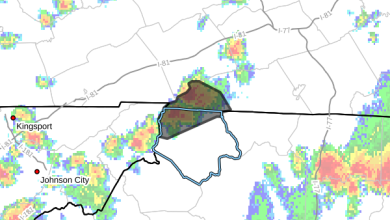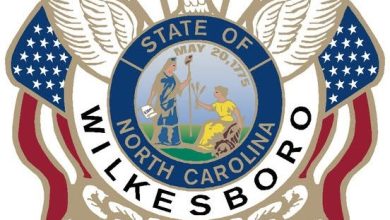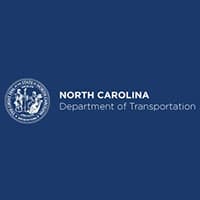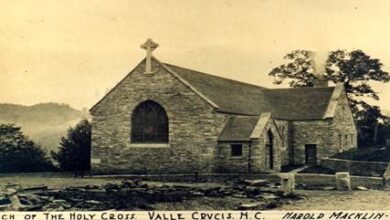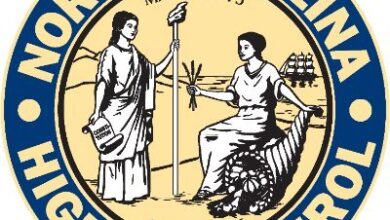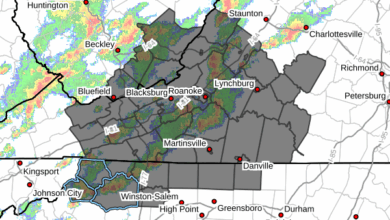Last Updated on November 4, 2014 4:41 pm
As winter begins to make itself felt, Watauga County Schools Superintendent Dr. Scott Elliott is reminding parents and families how the school system makes and communicates decisions about school closings, delayed openings, and other changes resulting from inclement weather.
“We always want to keep schools open on a regular schedule when it’s safe to do so, but we know there will be days when winter weather forces us to change our schedules and bus routes,” remarked Elliott. “We realize that has a big effect on families and we want them to understand how we make that decision and how we convey the decision when it’s made.”
Although school closings and delays are usually announced between 5:30 and 6:00 a.m., the process for making the decision begins much earlier. A team of at least six school personnel, including Elliott, starts checking road conditions throughout Watauga County around 3:30 a.m., a task that can take an hour or more. Even before this team is on the road, Transportation Director Jeff Lyons is getting updates on conditions from local law enforcement and the NC Department of Transportation, as well as checking the latest forecasts and weather radar.
As members of the road check team complete their routes and report on conditions in their areas, discussions about the safety of road conditions begin in earnest. Decisions about school schedules and bus routes are normally made by 5:00-5:30 or earlier. When conditions permit, school closings and delays are announced the evening before instead of in the morning.
School closings and delays are announced in seven different ways: a recorded “snow line” message at 264-0200; an announcement at the top of all pages of school websites (www.watauga.k12.nc.us); via local radio and TV stations; by automated phone messages, e-mail, and text messages; and via Twitter (@WataugaSchools). Parents are encouraged to update contact information with their school office immediately whenever phone numbers and e-mail addresses have changed.
Each year there are times when the decision on whether schools can open on the regular schedule is especially difficult. “We live in a county where road and weather conditions often differ significantly from one community to the next,” commented Elliott. “There will be days when some families will wonder why schools are closed or delayed even though roads are clear in their area. However, we operate as a unified school system and we have to make a decision based on what is safe for all of our families and school employees. I would also ask people to remember that our high school serves the entire county and that school buses, student drivers, and our employees come to the high school from all parts of the county.”
Limited school bus routes are used as road conditions dictate. The names for the two limited route options have been changed this year to more clearly identify which option is being used. The limited route option that is commonly used is now called Limited Routes A. The more restricted limited route option, consisting mostly of numbered U.S. and state highways, will be referred to as Limited Routes B. Details of both limited route options can be found on each school website and a paper copy of route information can be requested from the school office. When a limited route option is in effect for the school system as a whole, it is announced in the same ways as a school closing or delayed opening.
Elliott noted that Limited Routes B, which have very rarely been used in the past, may be put into effect more often this year. “If we begin to miss a number of days and there are times when local and state road crews are only able to clear the most heavily traveled routes after a snowstorm, the Limited Routes B option may be used more frequently as a way to avoid additional school closings.”
On very rare occasions, schools may be delayed or closed due to extremely bitter cold even when roads are clear. Very low temperatures, especially if combined with wind, can pose a threat to young children and also make it difficult to start and operate the diesel fueled school buses that carry 2,000 students to school each day.
Dr. Elliott said he understands and sympathizes with parents who are concerned about school closings and delays and regrets how these events can disrupt instruction and interfere with parents’ roles at work and elsewhere. “We know it’s difficult for families when school schedules are changed,” he acknowledged, “but we live in the mountains and harsh winter weather is unfortunately just part of living in this beautiful place. Please know we will make the best decisions we possibly can using all the information available at the time, and that the safety of our students, their families, and our employees is our highest priority in making the call. We ask for everyone’s patience and understanding as we face the challenges of winter weather in the months ahead.”
When schools are closed for inclement weather, the missed days are made up at a later time. The plan for making up missed days is available under the Calendar heading on the WCS website or a paper copy can be requested from any school office. In making vacation plans, parents are encouraged to remember that spring break can be shortened or eliminated and that the school year could extend well into June if a severe winter results in frequent school closings.
The Watauga County Schools are closed an average of approximately 15 days per year for snow and ice, with wide variation around that average. The number of days missed has ranged from a low of four days in 1990-91 to a peak of 39 days in 1977-78.
For more on the history of snow days for Watauga County Schools see this page.








